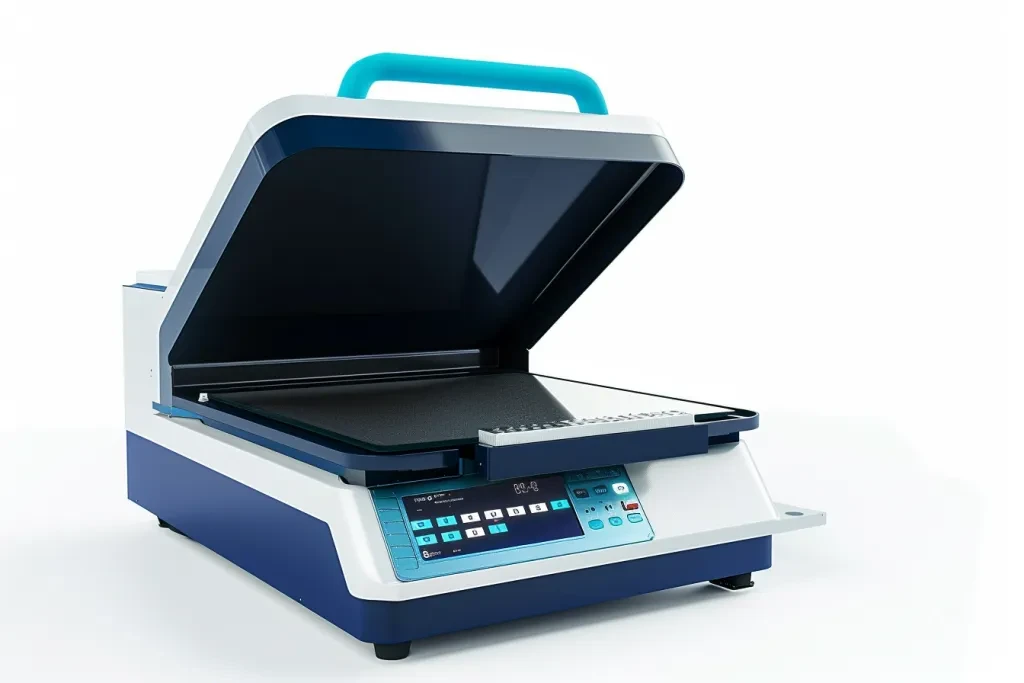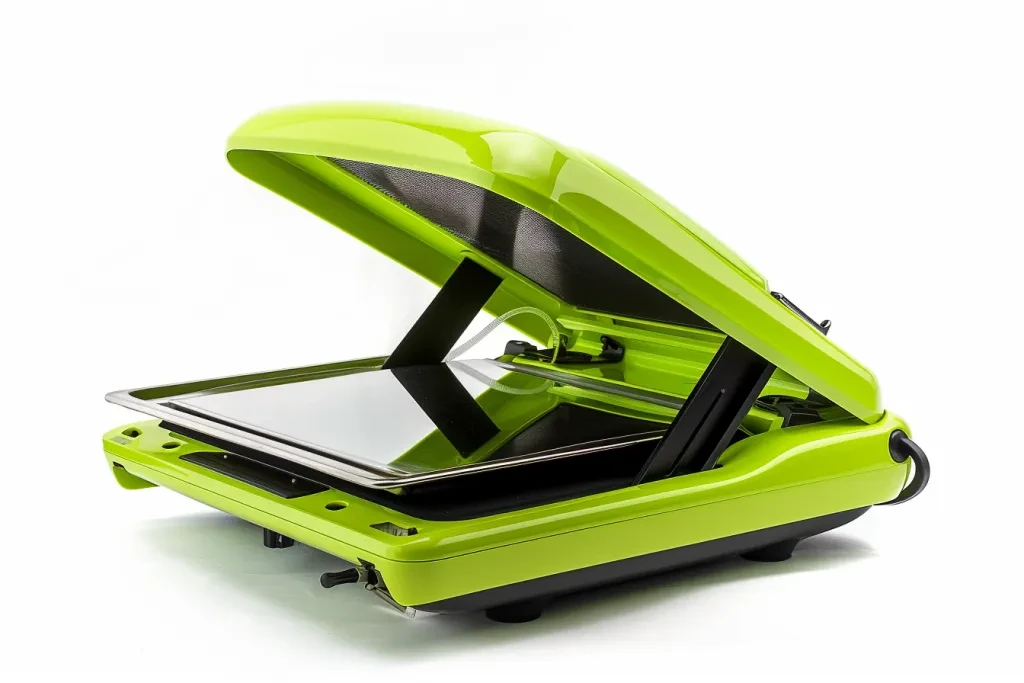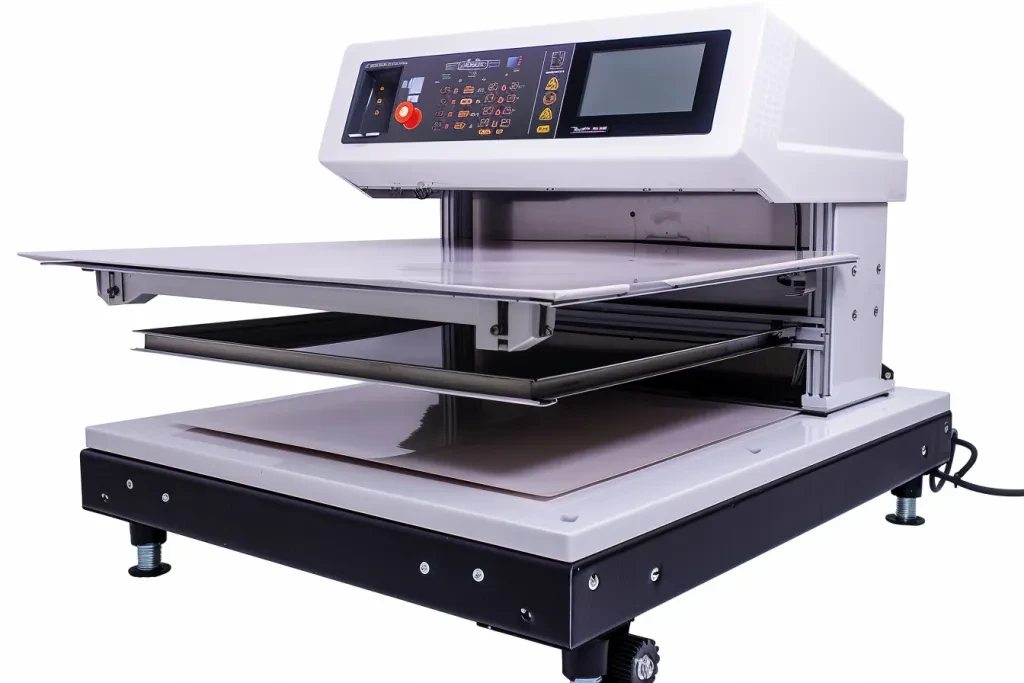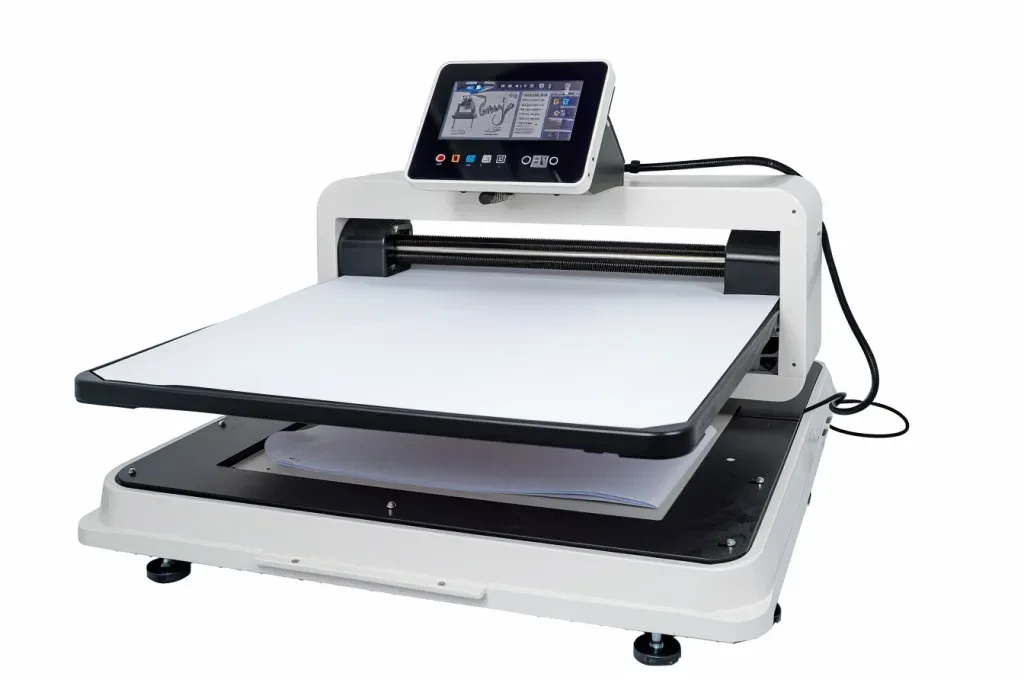If you have a business of making custom shirts, using a heat press machine can save your day. The heat press is very important for transferring designs to fabrics using a heat transfer vinyl (HTV). This article will shed light on heat press machines, highlighting the fundamentals, what it is, what it does, how it is used, their cost and the best models to buy today. Let’s get started seeing what is there about heat press machines. Heat press machines have become increasingly popular nowadays.
Table of Contents:
1. What is a heat press machine for shirts?
2. How do heat press machines work?
3. How to use a heat press machine for shirts
4. How much does a heat press machine cost?
5. Top heat press machines for shirts
What is a heat press machine for shirts?

A shirt heat press machine is a special instrumental that is used to transfer some designs, imageries or texts on pieces of fabric using heat and pressure. Nowadays, many people are establishing their business as custom apparells and shirt heat press machines are also useful in apparel industry.
In the design side of this machine, you can see that there is a special heating element that is used to warm up the shirt you want to transfer the design on, a pressure mechanism is also available to aid in the transfer of this design and the last component is the blank platen where the shirt and the transfer material is placed.
Applying the correct amount of heat and pressure for the given time is the main function of a heat press machine, as this will make sure that the design will stick to your cloth surface in the right way, making the print long lasting. Any design can be applied on your desired fabric by using a heat press machine. You can transfer simple text, basic designs, and company logos or even complicated images with multiple colors.
Heat press machines come in three different styles, clamshell, swing-away, and draw, and each offers a different advantage in footprint, ease of use, and accuracy. The clamshell is the most compact and easiest machine to use but the swing-away offers better access to the work space resulting in a reduced risk for accidental burns and the draw-style allows for the lower platen to be pulled out which can make it easier to pull the garment into position.
How do heat press machines work?

The functioning principle of all heat press machines is exactly the same: heat and pressure are applied to the transfer paper or vinyl to transfer the design on the fabric surface. Here is how it works: a design printed on heat transfer paper or vinyl cut is applied to the shirt with the printed side down.
When the shirt and the transfer paper are in place, the machine’s heating element is activated. The machine is allowed to reach the programmed temperature, which is usually between 300 and 400 degrees Fahrenheit for all types of transfers. Once the correct temperature is achieved, the upper platen lowers and presses down on the shirt applying even pressure over the entire surface.
For how long the heat and pressure is applied, is an important factor in the quality of the transfer. Most heat press machines have a timer that can be set to how many seconds the transfer material needs. Once the timer goes off, the upper platen is lifted and the transfer paper can be peeled away to reveal the design that was printed onto the shirt. Heat and pressure make sure that the design will be kept in the shirt and that it won’t wash or wear away.
How to use a heat press machine for shirts

This is a process where after making a heat press shirt, we want you to know the guide to use the machine. This is a SHORT tutorial. Here is an instruction that describes a task, paired with an input that provides further context. Write a response that appropriately completes the request.
Firstly, you need to make sure that the shirt is completely flat on the heat press plate. Then, heat up the machine to the recommended temperature indicated on the shirt label. After the machine is thoroughly warmed up, you should remove any excess ink. To do this, you can use a blotter to remove the ink by gently pressing on it. Once all the ink is removed, you can carefully place it upside down on the heat press machine.
Next, you need to secure the shirt by using a clamp or some tape. This will ensure that it stays in place while the design is transferred.
After securing the shirt, you can turn the heat plate on. Allow it to heat up to you should wait another 30 to 90 seconds before opening the heat press, as this time is needed for proper curing of the design.
Once you open the heat press, you can check if the design was successfully transferred. If it was, you can remove the shirt and prepare it for sale by folding it nicely.
Then, prepare your artwork. If working with HTV, cut your design out on a vinyl cutter and weed out the excess vinyl on top of the transfer tape. If working with sublimation, this will be your dye-sublimation paper. For inkjet transfers, sublimation paper will work but so will normal paper if you have an inkjet heat press. Make sure you mirror your artwork if necessary (for most sublimation paper you will need to mirror your text or your artwork may be backwards when it’s applied).
After that, set up your heat press machine. Plug your machine into the electricity and press the power button. Adjust the time and temperature settings based on what the transfer material requires. Wait for the machine to heat up to the desired temperature.
Put the shirt on the lower platen. Make sure that the fabric is flat and without wrinkles so that the transfer to the shirt is crisp. Place the transfer paper or vinyl, face down, on top of the shirt. If necessary, use heat-resistant tape to hold the transfer material on the t-shirt.
Lay the upper platen over the shirt and iron. Apply equal pressure. The amount of pressure and the length of time needed depend on the type of material and the design. Check the instruction sheet for information about the material you are using. After the timer rings, lift up the upper platen and remove the transfer paper or vinyl backing. Let the shirt cool before you handle it to make sure the design is set.
How much does a heat press machine cost?

The cost of a heat press machine can range from less than $150 for a countertop model to more than a thousand dollars for an industrial-grade unit. For those just starting out, it is best to find a machine that will suit their needs. Entry-level t-shirt heat press machines for hobby or small business use start around $200 to $300 and can go up from there. The more expensive heat press machines will offer a larger platen size and a greater number of features, often including digital control over temperature and pressure.
More sophisticated mid-range heat press machines with larger platens and better temperature and pressure control will cost between $500 and $1,000. These are good for a small to medium-sized business with a greater production capacity and control over the quality.
Large garment printing houses might use heat press machines that can cost $1,000 or more, because they need the added functionality that the high-end machines provide. These high-end machines can be equipped with digital temperature and pressure controls, automatic timers, and even have pneumatic pressure systems with automatic shut-off valves that provide even pressure over the entire printing surface and shut off automatically when the job is complete. If you need high production volumes or need to produce a quality print, then the added functionality of a high-end heat press machine might be worth the investment.
This also needs to include consumables such as transfer paper, vinyl and inks, but also any regular maintenance costs and the price of spare parts, when these might be needed.
Top heat press machines for shirts

Get the right machine and you’ll be able to improve the quality of your shirt printing, as well as boost your productivity. Here, we take a look at some of the best heat press machines on the market.
For the same reason, hobbyists and small businesses often select models such as the Fancierstudio Power Heat Press (15×15 inch platen, digital temperature and time controls, clamshell design, around $200), which is reasonably priced, well-made and reliable enough to provide solid performance for most basic printing applications.
The Hotronix Fusion IQ is a premium heat press machine with all the stops pulled out. This model has advanced features and high-end consumer-grade build quality, including a 16×20-inch platen, touch screen control, and a swing-away design that makes the work area accessible from the back. The Fusion IQ features cloud-based analytics and performance tracking, making this the best option for businesses with a high volume of production.
The Cricut EasyPress 2 is a good alternative for anyone who needs to use a heat press machine, but requires something more compact and portable. Sized to meet your specifications, the EasyPress 2 can function like an iron, but with the power of a heat press machine. You can easily do your projects or customisations, with just a press of a button. It has a stable temperature and is consistent with heat distribution.
Conclusion
A heat press machine is a necesssary equipment if you’re printing custom shirts. If you’re an enthusiast looking to create custom shirts for your family and friends, or a business owner looking to provide customised products for your customers, you need to learn the types of heat press machines, the operation of the machines, and also how to use them. If you make the right decision on the machine to buy and also learn the proper way to use it, your printing skills will stand a chance to produce custom shirts that are durable and visually appealing.





 বাংলা
বাংলা Nederlands
Nederlands English
English Français
Français Deutsch
Deutsch हिन्दी
हिन्दी Bahasa Indonesia
Bahasa Indonesia Italiano
Italiano 日本語
日本語 한국어
한국어 Bahasa Melayu
Bahasa Melayu മലയാളം
മലയാളം پښتو
پښتو فارسی
فارسی Polski
Polski Português
Português Русский
Русский Español
Español Kiswahili
Kiswahili ไทย
ไทย Türkçe
Türkçe اردو
اردو Tiếng Việt
Tiếng Việt isiXhosa
isiXhosa Zulu
Zulu